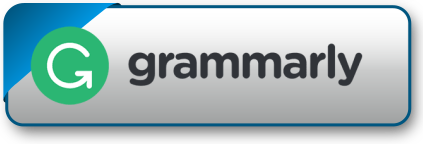Design of Infiltration Well to Reduce Inundation in Rawa Makmur Village, Bengkulu City
DOI:
https://doi.org/10.24853/jasat.1.2.53-58Kata Kunci:
Discharge flood plan, Debit reduction, Soil permeability, Infiltration wellAbstrak
Rawa Makmur Village, especially Merpati I, has an area of 3.6 hectares, has experienced land use changes of 30% in the last 3 years. The purpose of this study is to design infiltration wells to reduce inundation that often occurs in this region. The data used are primary data (soil sampling and laboratory testing) and secondary data (rainfall data, land use data and other supporting data) that are processed using hydrological analysis and hydraulic analysis. Based on the results of data processing obtained the intensity of rainfall with a 20-year return period is 2.56 mm/hour and the flood discharge plan is 0.01229 m3/s. The household debit is 0.212 m3/s, the roof discharge is 0.00000037 m3/s, so the total debit that must be reduced is 0.222 m3/s. The soil sample at the study location is taken and tested in the laboratory. The test results show the soil permeability coefficient is 2.630 x 10-4 m3/s. Infiltration discharge into the soil is 0.000152 m3/s, then the reduced discharge is 0.2218 m3/s. Based on the analysis results obtained the design of infiltration wells with a diameter of 1 meter and a depth of 2.2 meters. One well was effectively used for 2 houses with a reduction of 0.2218 m3/s with a reduction time of 1,297 minutes.Unduhan
Referensi
Monografi Kelurahan Rawa Makmur. Bengkulu (2013)
M. Belladona, Pemetaan Daerah Genangan dan Kajian Genangan Banjir pada Kawasan Komersial di Kelurahan Rawa Makmur, Majalah Teeknik SIMES Vol 11 No.1 Faculty of Engineering, Universitas Prof. Dr. Hazairin, SH, Bengkulu(2017) 40.
R.A. Rachman, Suhardjono, and P.T. Juwono, Studi Pengendalian Banjir di Kecamatan Kepanjen dengan Sumur Resapan. Jurnal Teknik Pengairan Volume 5 Nomor 1, Universitas Brawijaya, Malang (2014) 79.
Florince, N. Arifaini, I. Adha, Studi Kolam Retensi sebagai Upaya Pengendalian Banjir Sungai Way Simpur Kelurahan Palapa Kecamatan Tanjung Karang Pusat, JRSDD Vol. 3 No. 3, Lampung (2015).
S. Komariyah, A.P. Saido, and B. Dhianarto, Kajian Genangan Banjir Saluran Drainase dengan Bantuan Sistem Informasi Geografis(Studi Kasus: Kali Jenes, Surakarta), Media Teknik Sipil, Universitas Surakarta, Surakarta (2007).
M. Bisri, and T.A.N. Prastya,. Imbuhan Air Tanah Buatan untuk Mereduksi Genangan (Studi Kasus di Kecamatan Batu Kota Batu), Jurnal Teknik Sipil Volume 3 No. 1, Malang (2009).
Suhardjono, Drainase Perkotaan,Faculty of Engineering, Universitas Brawijaya, Malang (2013).
P.A. Putra, andM. Handajani,. Evaluasi Permasalahan Sistem Drainase Kawasan Jeruk Purut, Kecamatan Pasar Minggu, Kotamadya Jakarta Selatan, Jurnal Teknik Sipil dan Lingkungan,Civil Engineering Institute. ITB, Bandung (2010).
Suripin,. SistemDrainase Perkotaan yang Berkelanjutan, Andi Publisher, Yogyakarta (2004).
Hardiyatmo and H. Christady. . Prinsip – Prinsip Mekanika Tanah Dan. Soal – Penyelesaian 1, Beta Offset, Yogyakarta (2001).
Kusnaedi, Sumur Resapan untuk Pemukiman Perkotaan dan Pedesaan, Swadaya Publisher, Jakarta (2011).
Standar Nasional Indonesia,Tata Cara Perencanaan Sumur Resapan Air Hujan,SK SNI 03-2453-1-2002: Badan Standarisasi Nasional(2002).
##submission.downloads##
Diterbitkan
Terbitan
Bagian
Lisensi
COPYRIGHT POLICY
The author(s) of an article published in the Journal of Applied Sciences and Advanced Technology (JASAT) retains ownership of the intellectual property rights in work (s).
PUBLISHING RIGHTS
The author(s) of an article published in the Journal of Applied Sciences and Advanced Technology (JASAT) have unrestricted publication rights. The authors give the Journal of Applied Sciences and Advanced Technology (JASAT) the right to publish the article and designate the Faculty of Engineering Universitas Muhammadiyah Jakarta Publishing as the original publisher of the article.
LICENSING POLICY
JASAT is an open-access journal that follows the Creative Commons Non-Commercial 4.0 International License (CC BY-NC 4.0), which states that:

Under this license, the reusers must give appropriate credit, provide a link to the license, and indicate if changes were made. Users may do so in any reasonable manner, but not in any way that suggests the licensor endorses users or their use.
Please take the time to read the whole license agreement (https://creativecommons.org/licenses/by-nc/4.0/). As long as reusers follow the license conditions, the owner cannot withdraw these freedoms. The following components are included under this license:
 Attribution: Users must provide appropriate attribution, including a link to the license, and indicate whether or not they made any modifications. Users are free to do so reasonably, but not in a manner that indicates the licensee approves of their usage.
Attribution: Users must provide appropriate attribution, including a link to the license, and indicate whether or not they made any modifications. Users are free to do so reasonably, but not in a manner that indicates the licensee approves of their usage.
 NonCommercial: Users may not use the material for commercial purposes.
NonCommercial: Users may not use the material for commercial purposes.












_2.png)


1.png)

2.png)
